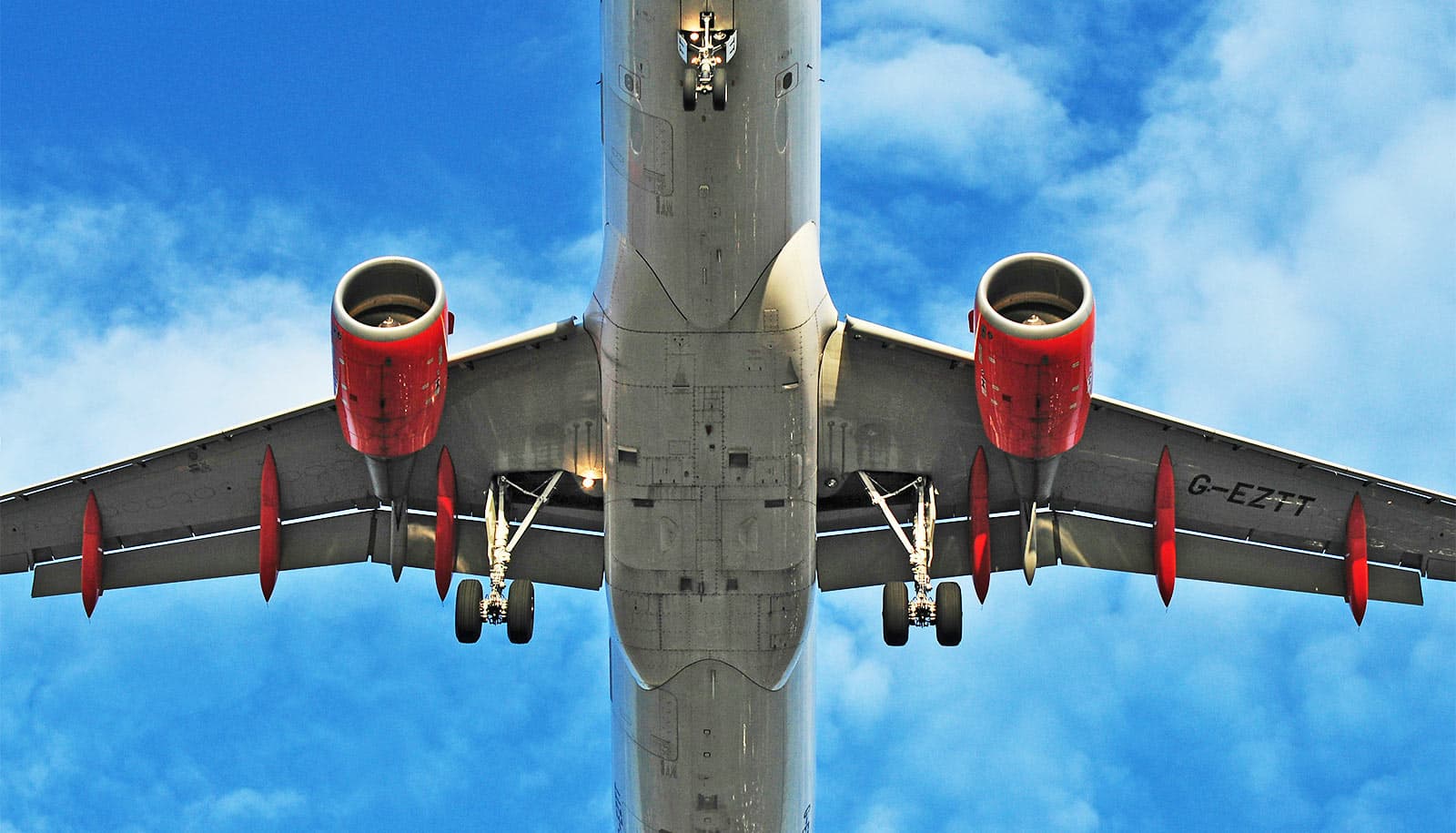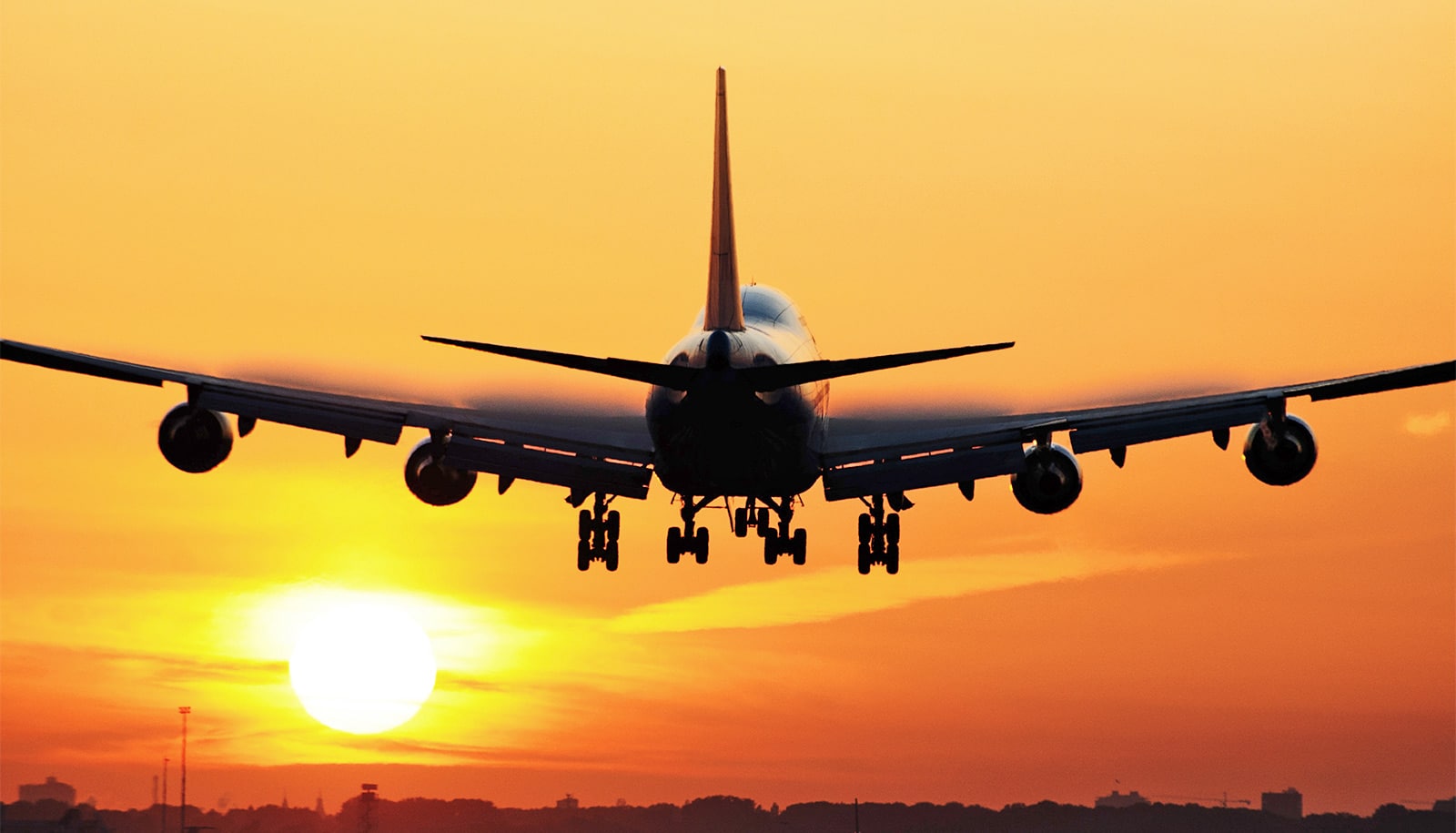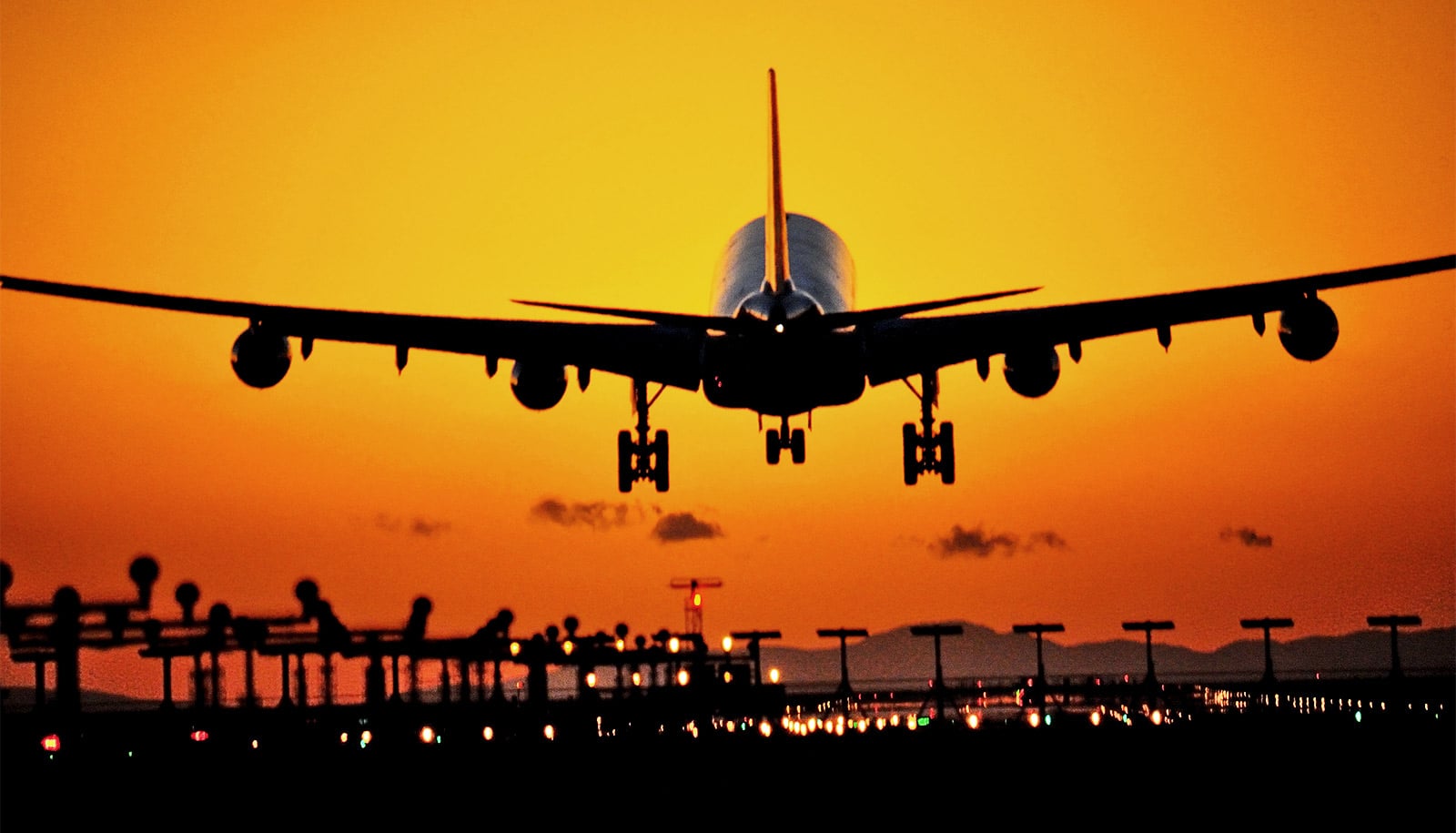Airplane noise may increase risk of developing cardiometabolic diseases, a cluster of conditions that includes heart attack, stroke, diabetes, and hypertension, according to a new study.
Researchers found that people exposed to aircraft noise levels at 45 decibels or more were more likely to have higher self-reported body mass index (BMI)—an indicator of general obesity, which can lead to cardiometabolic diseases, as well as a range of other health issues.
A noise level of 45 decibels (dB) is just above the hushed tones of a library (40 dB) and quieter than a typical conversation at home (50 dB).
The researchers conclude that the highest BMI measures were linked to aircraft noise levels at 55 dB or above. Noise exposure at 45 dB or above was also associated with having higher BMI in middle to late adulthood from early adulthood.
The study, published in the journal Environment International, is the first to explore a connection between aircraft noise exposure and obesity nationwide in the United States; past studies on this subject have focused on European populations, and results have varied.
“In the US, noise has been an overlooked environmental pollutant,” says Junenette Peters, an associate professor of environmental health at Boston University School of Public Health (SPH), who helped lead the research.
“In our modern world, noise is continually around us and our bodies may not have adjusted to this constant input of noise. Noise influences stress responses, which may start a series of events that can lead to higher BMI and later to disease.”
In a 2023 study, Peters found aircraft noise—even as low as 45 db—increased the risk of sleeping less than seven hours a night. She notes that the distance someone could experience 45 dB of aircraft noise could reach out as far as 22 miles from a major airport.
“Prior research has shown that aircraft noise can elevate stress responses and disturb sleep, but there has been mixed evidence of any links with body mass index,” says former SPH postdoctoral associate Matthew Bozigar, now an assistant professor of epidemiology at Oregon State University, who worked with Peters on both studies. “We were surprised to see a fairly robust link between aircraft noise and higher body mass index.”
The researchers say the new findings underscore the role of the environment in a person’s risk of chronic disease.
“Obesity has become very stigmatized, but what is important to remember is that it is linked with poor cardiometabolic health outcomes and that it has strong environmental drivers,” Bozigar says. “This is disheartening, but also promising in the sense that we could potentially enact policies to mitigate these drivers of obesity.”
Living near airports
For the study, the researchers examined aircraft noise exposure and self-reported BMI and other individual characteristics among nearly 75,000 participants living around 90 of the major US airports. The researchers selected participants from the Nurses’ Health Studies (NHS), ongoing prospective studies of participating female nurses who have completed biennial questionnaires since the 1970s and 1980s.
The team examined aircraft noise levels every five years from 1995 to 2010, using a day-night noise level (DNL) estimate that captures the average noise level over a 24-hour period and applies a 10 dB adjustment for aircraft noise occurring at night, when background noise is low. The current policy-related threshold for significant noise impacts is above DNL 65 dB. The researchers assessed BMI measures at multiple thresholds below that for the nurses’ geocoded residential addresses.
Although the team says that BMI is a suboptimal metric, the independent and strong association between more aircraft noise exposure and higher BMI that they observed is notable. There were also regional differences, with stronger associations among participants on the West Coast and those who live in arid conditions.
“We can only hypothesize about why we saw these regional variations, but one reason may relate to the era of regional development, building characteristics, and climate, which may affect factors such as housing age, design, and level of insulation,” says Peters.
“Regional differences in temperature and humidity may influence behaviors such as window opening, so perhaps study participants living in the West were more exposed to aircraft noise due to open windows or housing type, which allowed more noise to penetrate.”
Similarly, the stronger associations observed in arid climates, many of which are also in the western United States, may relate to the way noise travels under various atmospheric conditions, she says.
Airplane noise and environmental justice
In future research, Peters hopes to examine broader inequities in environmental noise exposure, particularly among other populations. Previous data suggest that Black, Hispanic, and low-income populations are disproportionately exposed to aircraft noise. The participants in the NHS study groups were primarily white and of mid-level socioeconomic status.
“We need to study the potential health impacts of environmental injustices in transportation noise exposures alongside other environmental drivers of poor health outcomes,” Bozigar says. “There is a lot more to figure out, but this study adds evidence to a growing body of literature that noise negatively impacts health.”
For now, Peters says, residents troubled by the rumble of aircraft can educate themselves—the Federal Aviation Administration has a series of primers and details for making a complaint—and advocate for lawmakers to consider the health implications of environmental noise.
“There are a growing number of people calling for federal funds to be allocated to the Environmental Protection Agency’s Office of Noise Abatement and Control, which would reinstate the EPA’s authority to direct noise research and control activities,” she says. “We can also consider efforts to reduce the noise airplanes make and where and when airplanes fly, and to expand noise abatement programs, keeping in mind national and international considerations on our ability to travel and to get goods and services.”
The Federal Aviation Administration funded the work.
Source: Boston University



